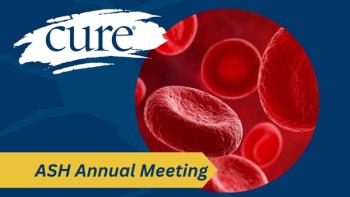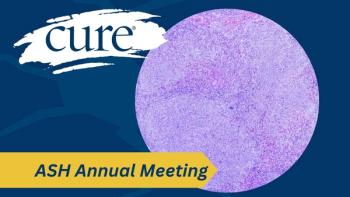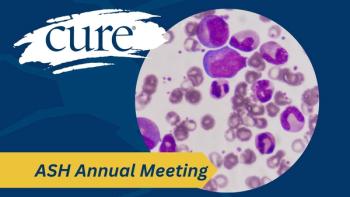
FDA Approval Sought for New Treatment of NSCLC Subset
Rolling submission of a new drug application for rociletinib has been initiated for patients with EGFR T790M-positive metastatic NSCLC following prior treatment with an EGFR-targeted therapy.
Rolling submission of a new drug application (NDA) for rociletinib (CO-1686) has been initiated for patients with EGFR T790M-positive metastatic non—small cell lung cancer (NSCLC) following prior treatment with an EGFR-targeted therapy, according to a statement from the drug's developer, Clovis Oncology.
Rolling submission of an NDA is allowed as a perk of the breakthrough therapy designation that the potent mutant-selective EGFR inhibitor received in May 2014. Once fully submitted, the FDA will review the application within 60 days, at which point the agency will assign a review deadline under the Prescription Drug User Fee Act. Clovis anticipates that all data will be submitted by late July 2015.
“The initiation of this rolling submission represents a very important first step toward our biggest milestone of 2015—the submission of our first NDA for rociletinib as treatment for patients with T790M-positive EGFR-mutant non—small cell lung cancer,” Patrick J. Mahaffy, president and CEO of Clovis Oncology, said in a statement. “We look forward to completing the NDA by the end of July, and are actively preparing for our first commercial launch.”
The application for rociletinib was based on findings from the ongoing phase 1/2 TIGER-X trial. Updated data from the trial were presented by Lecia V. Sequist, medical oncologist, associate professor, Massachusetts General Hospital, Harvard Medical School, at the 2015 annual meeting of the American Society of Clinical Oncology (ASCO), a gathering of nearly 30,000 oncology professionals in Chicago.
“Rociletinib demonstrates compelling activity and is well-tolerated at the recommended dose of 500 mg [two times per day] in a predominantly U.S. cohort of EGFR-mutant patients with acquired resistance to prior [tyrosine kinase inhibitors],” Sequist said when she presented the results. “The response rate at the 500-mg dose level was 60 percent and the toxicity profile is improved at this dose level compared with higher dose levels.”
In the ongoing TIGER-X trial, 456 patients received rociletinib across four doses (ranging from 500 to 1000 mg). All patients enrolled were EGFR-positive. Patients with stable central nervous system (CNS) metastases were allowed to enroll in the trial. Overall, 119 patients received rociletinib at 500 mg twice daily, which was the dose selected for future study.
The majority of patients were enrolled in the U.S. (84 percent). The median age of patients was 63 years, 10 percent had a prior history of diabetes and 41 percent had CNS metastases. The median prior number of therapies was two and nearly half of patients had received more than one tyrosine kinase inhibitor (44 percent).
In patients with T790M mutations by tissue (243 patients), the objective response rate (ORR) across all dose levels was 53 percent. The disease control rate (DCR) was 85 percent. In those with T790M mutations who received rociletinib at 500 mg (48 patients), the ORR was 60 percent and the DCR was 90 percent.
At a data cutoff of April 27, the median progression-free survival (PFS) in evaluable patients with T790M mutations across the 500- and 625-mg doses (270 patients) was 8.0 months. In those without baseline CNS metastases, the median PFS was 10.3 months.
In order to assess a potential liquid biopsy approach, plasma samples were analyzed by the BEAMing system, which uses emulsion PCR and hybridization followed by flow cytometry. Of available samples, plasma testing accurately identified T790M mutations in 155 patients compared with 192 for tissue-based testing, representing an 81 percent rate of agreement.
"We found that plasma BEAMing is a successful technique for detecting T790M and imagine that in the future this will be quite useful clinically, either as an initial screen or as a replacement for tissue biopsy," Sequist noted.
About 8 percent of patients who underwent a tumor biopsy for T790M had inadequate tissue to conduct the analyses, Sequist noted. In the end, both plasma and tissue detected approximately the same number of patients from the overall cohort (192 by tissue, 190 by plasma).
"It may not be appropriate to consider the tissue results as the gold standard comparator," Sequist suggested. "We know that a single needle biopsy could potentially misrepresent the entire heterogeneity of T790M that is present throughout the cancer in the patient’s body. In fact, plasma may be a better assessment of the sum of disease."
In evaluable patients with T790M-positive tumors by plasma testing (147 patients), the ORR was 53 percent and the DCR was 82 percent. In those who received the 500 mg dose of rociletinib (30 patients), the ORR was 57 percent and the DCR was 80 percent.
In patients with T790M-negative tumors, the ORR was 35% with plasma and 32 percent with tissue testing. For those who tested T790M-negative by both modalities (11 patients), the ORR was 27 percent.
"There are several hypothesis to explain why we're seeing responses in these patients, most importantly maybe is that we're seeing tumor heterogeneity in T790M," Sequist said. "It's also possible that the central test that was performed was falsely negative."
In the updated safety analysis, the most frequently occurring all-grade adverse events (AEs) in the 500-mg arm were hyperglycemia (35 percent), diarrhea (33 percent), fatigue (29 percent), decreased appetite (15 percent), muscle spasms (14 percent), weight loss (10 percent), and vomiting (8 percent).
Grade 3 QTc prolongation was seen in 2.5 percent of patients. No cases of interstitial lung disease were seen at the 500-mg dose level. AEs leading to treatment discontinuation were seen in 2.5 percent of patients with the 500 mg dose.
Grade 3/4 hyperglycemia occurred in 17 percent of patients treated with the 500-mg dose. To adjust for this, a monitoring and treatment algorithm was put in place to detect glucose levels and initiate treatment with oral insulin sensitizing agents, when needed. Prior to initiating these measures in September 2014, the rate of grade 3/4 hyperglycemia was 22 percent. With proper monitoring and treatment, this rate dropped to 8 percent.
"The hyperglycemia that we see with rociletinib is due to the M502 metabolite of the drug, which inhibits IGF1-R/IR, leading to insulin resistance. This adverse event was not anticipated based on the preclinical animal studies," said Sequist. "Once appreciated in the patients, investigators began to screen for early signs of this side effect, and overtime the incidence of severe side effects has dramatically decreased."
A number of clinical trials continue to assess rociletinib for patients with NSCLC. The phase 2/3 TIGER 1 trial is comparing rociletinib with erlotinib as first-line therapy in treatment-naïve patients with EGFR mutations who have not been screened for T790M status. TIGER 2, a single-arm phase 2 trial, is evaluating rociletinib as second-line therapy in patients with EGFR-mutated NSCLC who are T790M-positive. The randomized phase 3 TIGER 3 trial is evaluating rociletinib versus chemotherapy in patients who have progressed on a first-line EGFR TKI and are also T790M-positive.
In addition to monotherapy trials, multiple trials are planned to assess rociletinib in combination with other therapies. Studies looking at rociletinib with inhibitors of PD-L1, PD-1, and MEK are anticipated to begin enrolling patients in the second half of 2015.
Sequist LV, Goldman JW, Wakelee HA, et al. Efficacy of rociletinib (CO-1686) in plasma-genotyped T790M-positive non-small cell lung cancer (NSCLC) patients (pts). J Clin Oncol. 2015;33 (suppl; abstr 8001).





